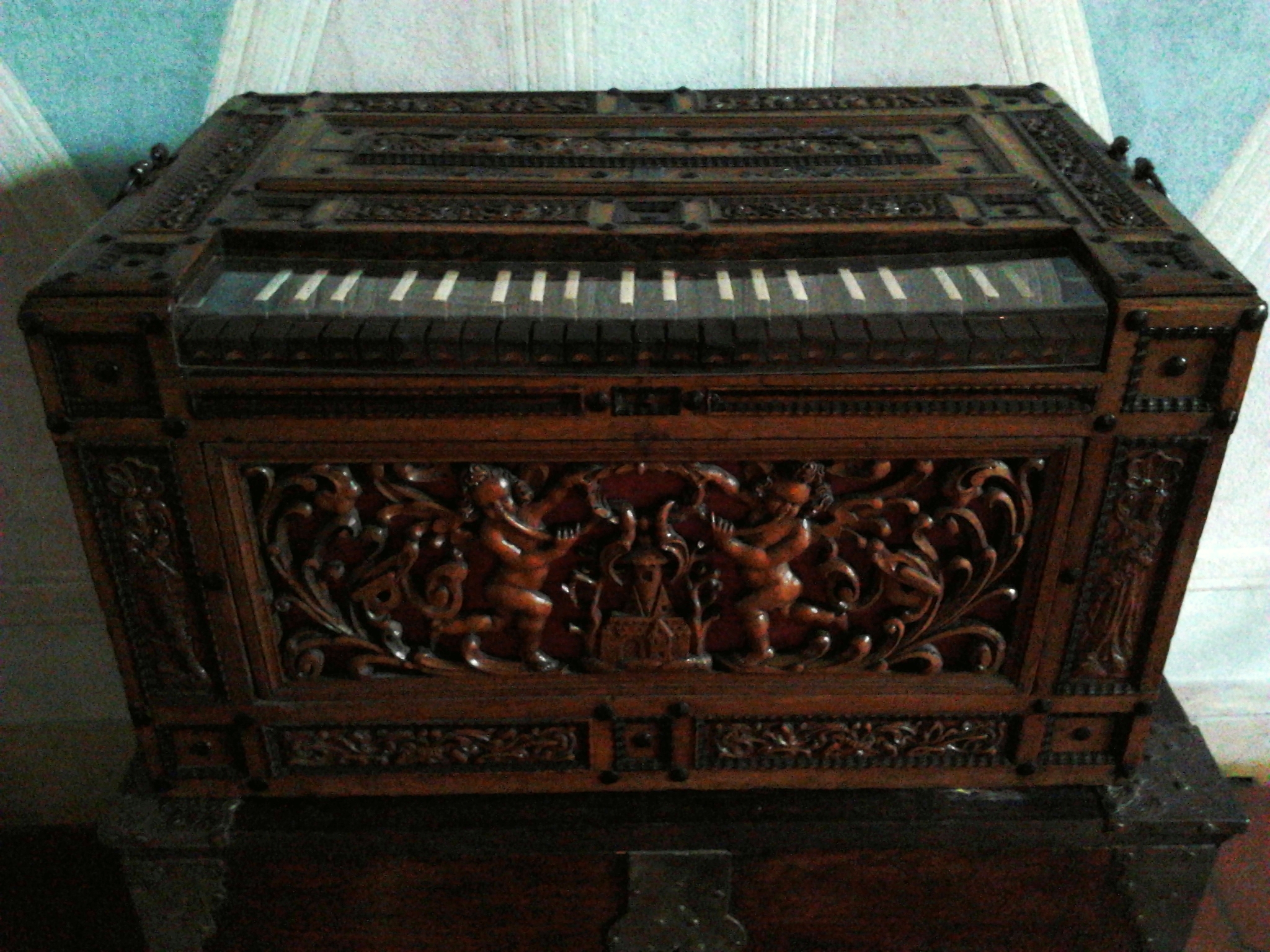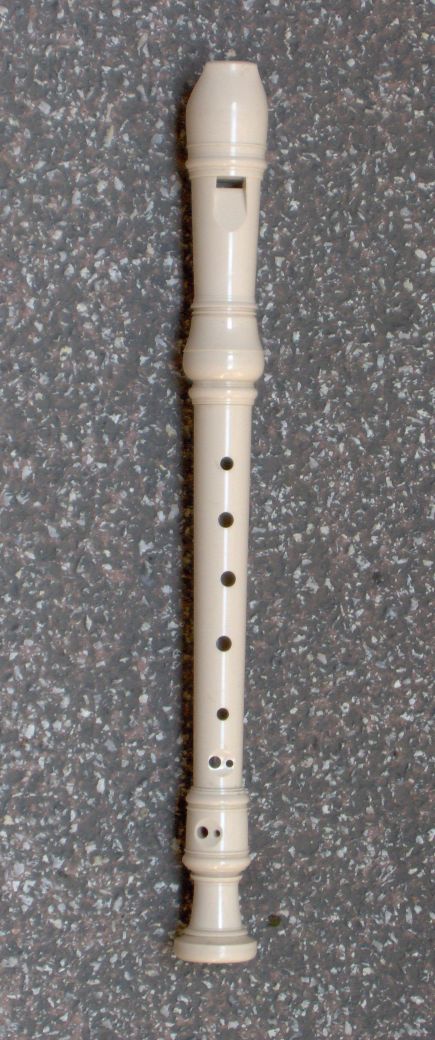|
Period Instrument
In the historically informed performance movement, musicians perform classical music using restored or replicated versions of the instruments for which it was originally written. Often performances by such musicians are said to be "on authentic instruments". This article consists of a list of such instruments in the European tradition, including both instruments that are now obsolete and early versions of instruments that continued to be used in later classical music. Renaissance (1400–1600) Strings * Violin * Viol * Viola * Cello * Lira da braccio * Contrabass * Violone * Lute * Theorbo * Archlute * Gittern * Mandore * Harp * Cittern * Vihuela Woodwinds * Cornamuse * Cromorne * Crumhorn * Rackett * Rauschpfeife * Recorder * Shawm * Dulcian Brasses * Keyboards * Clavichord * Harpsichord * Regal * Virginal * Ottavino * Organ Percussion * Drum * Timpani * Cymbals * Bass drum * Tabor Baroque (1600–1750) Strings * Violino piccolo * Violin * Viol * Viola da gamba * ... [...More Info...] [...Related Items...] OR: [Wikipedia] [Google] [Baidu] |
Cittern
The cittern or cithren ( Fr. ''cistre'', It. ''cetra'', Ger. ''Cister,'' Sp. ''cistro, cedra, cítola'') is a stringed instrument dating from the Renaissance. Modern scholars debate its exact history, but it is generally accepted that it is descended from the medieval citole (or cytole). Its flat-back design was simpler and cheaper to construct than the lute. It was also easier to play, smaller, less delicate and more portable. Played by people of all social classes, the cittern was a popular instrument of casual music-making much like the guitar is today. History Pre-modern citterns The cittern is one of the few metal-strung instruments known from the Renaissance music period. It generally has four courses of strings (single, pairs or threes depending on design or regional variation), one or more courses being usually tuned in octaves, though instruments with more or fewer courses were made. The cittern may have a range of only an octave between its lowest and highest st ... [...More Info...] [...Related Items...] OR: [Wikipedia] [Google] [Baidu] |
Virginal
The virginals is a keyboard instrument of the harpsichord family. It was popular in Europe during the late Renaissance and early Baroque periods. Description A virginals is a smaller and simpler, rectangular or polygonal, form of harpsichord. It has only one string per note, running more or less parallel to the keyboard, on the long side of the case. Many, if not most, of the instruments were constructed without legs, and would be placed on a table for playing. Later models were built with their own stands. Mechanism The mechanism of the virginals is identical to the harpsichord's, in that its wire strings are plucked by a set of plectra, mounted in jacks. Its case, however, is rectangular or polygonal, and the single choir of strings—one per note—runs roughly parallel to the keyboard. The strings are plucked either near one end, as with the harpsichord, or in the case of the muselar, nearer the middle, producing a more flute-like tone that's reduced in upper harmonics. ... [...More Info...] [...Related Items...] OR: [Wikipedia] [Google] [Baidu] |
Regal (instrument)
The musical instrument known as the regal or regalle (from Middle French ''régale'' ) is a small portable Organ (music), organ, furnished with beating Reed (instrument), reeds and having two bellows. The instrument enjoyed its greatest popularity during the Renaissance (music), Renaissance. The name "regal" was also sometimes given to the reed Organ stop, stops of a pipe organ, and more especially to the vox humana stop. History The sound of the regal is produced by brass reeds held in resonators. The length of the vibrating portion of the reed determines its pitch and is regulated by means of a wire passing through the socket, the other end pressing on the reed at the proper distance. The resonators in th ...[...More Info...] [...Related Items...] OR: [Wikipedia] [Google] [Baidu] |
Harpsichord
A harpsichord is a musical instrument played by means of a musical keyboard, keyboard. Depressing a key raises its back end within the instrument, which in turn raises a mechanism with a small plectrum made from quill or plastic that plucks one or more strings. The strings are under tension on a Sound board (music), soundboard, which is mounted in a wooden case; the soundboard amplifies the vibrations from the strings so that the listeners can hear it. Like a pipe organ, a harpsichord may have more than one keyboard Manual (music), manual and even a #Pedal harpsichord, pedal board. Harpsichords may also have Organ stop, stop levers which add or remove additional octaves. Some harpsichords may have a buff stop, which brings a strip of buff leather or other material in contact with the strings, muting their sound to simulate the sound of a plucked lute. The term denotes the whole family of similar plucked-keyboard instruments, including the smaller virginals, virginals#Muselars, m ... [...More Info...] [...Related Items...] OR: [Wikipedia] [Google] [Baidu] |
Clavichord
The clavichord is a stringed rectangular keyboard instrument that was used largely in the Late Middle Ages, through the Renaissance music, Renaissance, Baroque music, Baroque and Classical period (music), Classical eras. Historically, it was mostly used as a practice instrument and as an aid to composition, not being loud enough for larger performances. The clavichord produces sound by striking brass or iron strings with small metal blades called tangents. Vibrations are transmitted through the bridge(s) to the soundboard. Etymology The name is derived from the Latin word ''clavis'', meaning "key" (associated with more common ''clavus'', meaning "nail, rod, etc.") and ''chorda'' (from Greek χορδή) meaning "string, especially of a musical instrument". An analogous name is used in other European languages (It. ''clavicordio'', ''clavicordo''; Fr. ''clavicorde''; Germ. ''Klavichord''; Lat. ''clavicordium''; Port. ''clavicórdio''; Sp. ''clavicordio''). Many languages also have ... [...More Info...] [...Related Items...] OR: [Wikipedia] [Google] [Baidu] |
Dulcian
The dulcian is a Renaissance woodwind instrument, with a double reed and a folded conical bore. Equivalent terms include , , , , , , and . The predecessor of the modern bassoon, it flourished between 1550 and 1700, but was probably invented earlier. Towards the end of this period it co-existed with, and was then superseded by, the baroque bassoon. It was played in both secular and sacred contexts, throughout northern and western Europe, as well as in the New World. Construction The dulcian is generally made from a single piece of maple, with the bores being drilled and reamed first, and then the outside planed to shape. The reed is attached to the end of a metal bocal, inserted into the top of the small bore. Unlike the bassoon it normally has a flared bell, sometimes made from a separate piece of timber. This bell can sometimes be muted, the mute being either detachable, or built into the instrument. The outside of the instrument can also be covered in leather, like the c ... [...More Info...] [...Related Items...] OR: [Wikipedia] [Google] [Baidu] |
Shawm
The shawm () is a Bore (wind instruments)#Conical bore, conical bore, double-reed woodwind instrument made in Europe from the 13th or possibly 12th century to the present day. It achieved its peak of popularity during the medieval and Renaissance periods, after which it was gradually eclipsed by the oboe family of descendant instruments in classical music. It is likely to have come to Western Europe from the Eastern Mediterranean around the time of the Crusades.The Shawm and Curtal ��from the Diabolus in Musica Guide to Early Instruments Double-reed instruments similar to the shawm were long present in Southern Europe and the East, for instance the Ancient Greek music, ancient Greek, and later Byzantine Empire#Music, Byzantine aulos, the closely related sorna and zurna,A ... [...More Info...] [...Related Items...] OR: [Wikipedia] [Google] [Baidu] |
Recorder (musical Instrument)
The recorder is a family of woodwind musical instruments in the group known as ''internal duct flutes'': flutes with a whistle mouthpiece, also known as fipple flutes, although this is an archaic term. A recorder can be distinguished from other duct flutes by the presence of a thumb-hole for the upper hand and seven finger-holes: three for the upper hand and four for the lower. It is the most prominent duct flute in the western classical tradition. Recorders are made in various sizes with names and compasses roughly corresponding to various vocal ranges. The sizes most commonly in use today are the soprano (also known as descant, lowest note C5), alto (also known as treble, lowest note F4), tenor (lowest note C4), and bass (lowest note F3). Recorders were traditionally constructed from wood or ivory. Modern professional instruments are almost invariably of wood, often boxwood; student and scholastic recorders are commonly of moulded plastic. The recorders' internal and ext ... [...More Info...] [...Related Items...] OR: [Wikipedia] [Google] [Baidu] |
Rauschpfeife
A rauschpfeife ( pl. rauschpfeifes or rauschpfeifen; German: Rauschpfeife, pl. Rauschpfeifen) is a capped conical reed musical instrument of the woodwind family, used in Europe in the 16th and 17th centuries. In common with the crumhorn and cornamuse, it is a wooden double-reed instrument with the reed enclosed in a windcap. The player blows into a slot in the top of the windcap to produce the sound. Description Rauschpfeifes (Schreierpfeiffen) differ from cornamusen mainly in the shape of the bore, which, like the shawm, is conical. This bore profile combined with the unrestricted vibration of the reed within the windcap produced an instrument that was exceedingly loud, which made it useful for outdoor performances. The word ''Rauschpfeife'' ( German for "rush (or reed) pipe" from the Old German "rusch" for 'rush', as in grass), is found in the description of two windcapped instruments depicted in one of the 16th-century woodcut illustrations of '' Triumphal Procession'', co ... [...More Info...] [...Related Items...] OR: [Wikipedia] [Google] [Baidu] |
Rackett
The rackett, raggett, cervelas, or sausage bassoon is a Renaissance-era double reed wind instrument, introduced late in the sixteenth century and already superseded by bassoons at the end of the seventeenth century. Description There are four sizes of rackett, in a family ranging from descant (soprano), tenor-alto, bass to great bass. Relative to their pitch, racketts are quite small (the descant rackett is only 4½ inches long, yet its lowest note is G2). This is achieved through its ingenious construction; the body consists of a solid wooden cylinder into which nine parallel bores are drilled. These are connected alternately at the top and bottom, resulting in a long, cylindrical wind passage within a compact body so that one can carry in one's pocket an instrument that will descend as low in pitch as a modern bassoon. However, its unusual construction requires its fingering to be somewhat different from other period woodwinds; it is similar to the front seven holes of t ... [...More Info...] [...Related Items...] OR: [Wikipedia] [Google] [Baidu] |
Crumhorn
The crumhorn is a double reed , double reed instrument of the woodwind family, most commonly used during the Renaissance music, Renaissance period. In modern times, particularly since the 1960s, there has been a revival of interest in early music, and crumhorns are being played again. It was also spelled krummhorn, krumhorn, krum horn, and cremorne. Terminology The name derives from the German language, German (or or ) meaning ''bent horn''. This relates to the old English language, old English meaning curve, surviving in modern English language, English in 'crumpled' and 'crumpet' (a curved cake). The similar-sounding French term , when used correctly, refers to a woodwind instrument of different design, though the term is often used in error synonymously with that of crumhorn. It is uncertain if the Spanish wind instrument (attested in an inventory of 1559) designates the crumhorn, but it is known that crumhorns were used in Spain in the 16th century, and the identific ... [...More Info...] [...Related Items...] OR: [Wikipedia] [Google] [Baidu] |








